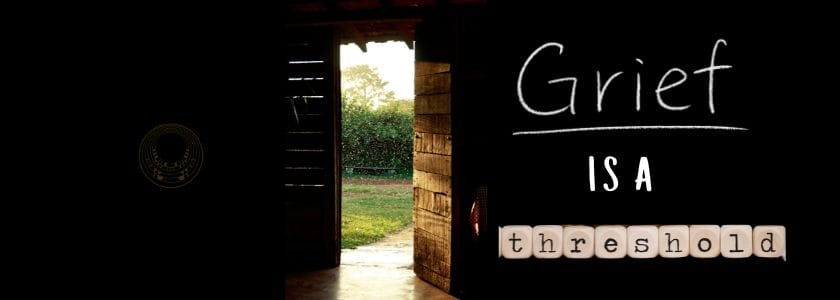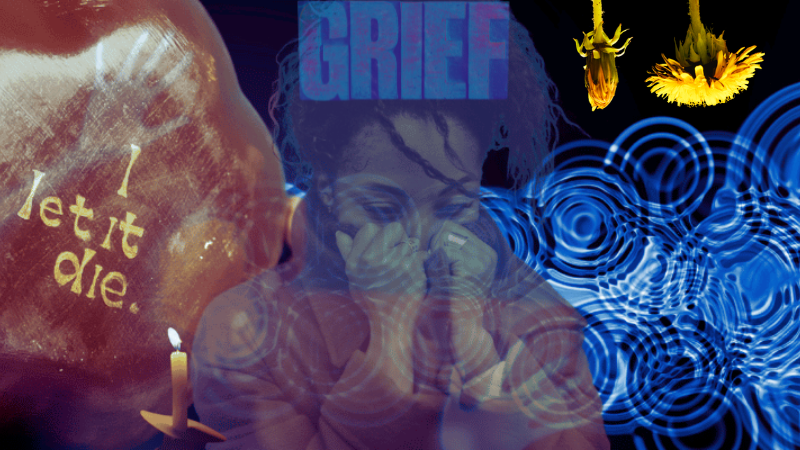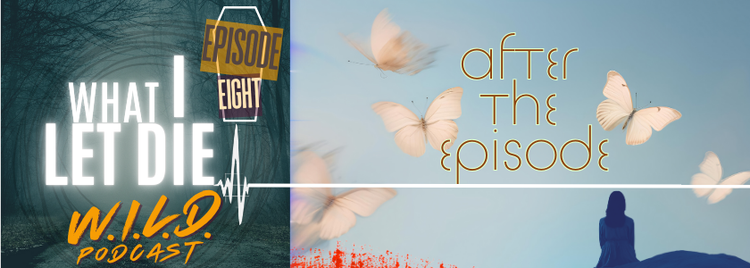Grief is a Threshold

We live inside a culture that tells us we don’t have time for grief.
☑️ Bills need paying
☑️ Families need tending
☑️ Deadlines need meeting
The message is: keep going, don’t stop, push through.
But here’s what I’ve learned: grief is not asking us for a retreat or a sabbatical. It’s not saying, pause everything for months or else you’ll miss me.
Grief is a threshold. A crossing. Though it might often feel like mountain, wall, or weight.
Thresholds don’t need hours carved out of the calendar to exist. They are already here in the quiet moment before you open your laptop, in the split second when a memory brings tears to your eyes, in the way your chest tightens when you hear that song. The threshold is always there, creaking open, asking us: will you step through, even for a moment?
Snorkeling, Not Scuba Diving
I often remind people: tending to grief doesn’t have to mean diving into the deepest waters with a tank strapped to your back. Sometimes it’s snorkeling. You take a breath, you dip your head under, you look around at what’s alive down there, and then you come back up.
That’s tending, too.
Snorkeling grief might look like setting a timer for ten minutes, pulling out a photo of someone you miss, and letting yourself feel what arises.
It might be scribbling a note you’ll never send, or placing a flower on the counter and whispering a name.
These are threshold practices, and you don’t need special gear or extended time away. You just need willingness to pause at the doorway and look inside, or outside.
Why the Threshold Matters
When we ignore grief because we feel we don’t have time for it, it doesn’t go away. It waits. It shows up in our bodies, our sleep, our sharp words to the people we love. Refusing the threshold doesn’t erase it; it just means we’re standing at the door, pretending we don’t hear or see it creak open.
Crossing the threshold, even briefly, shifts something. It reminds us that grief isn’t here to swallow us whole. It’s here to teach us how to put things down, how to move differently, how to live alongside what we’ve lost. And how to savor that loss.
The beauty of a threshold is that you can step in and step out. You don’t have to stay. You don’t have to resolve. You don’t have to be “done.” You just have to visit.
A Simpler Perception
What I want for us is an expanded perception of grief:
- Grief is a threshold, not a wall.
- Tending grief doesn’t require escape, it requires presence.
- Small rituals matter. A five-minute crossing can shift the weight you carry.
This is why I keep offering practices like grief snorkeling. Because thresholds are ordinary. They live in our kitchens and bathrooms, in our car rides and inbox pauses. They don’t demand a mountain of time, only a willingness to notice and tend.
If you want to hear more about these kinds of everyday practices, What I Let Die (WILD) podcast is full of stories and reflections meant to help you practice grieftending in real time.
Each episode is short enough to fold into your day, and spacious enough to remind you that you don’t have to do this alone.
The next time you feel that lump in your throat, that heaviness in your chest, see it as a threshold. Decide not to run past it. Stand there. Breathe there. Step in, even just for a moment.
Grief as a threshold reminds us that we don’t need to escape our lives to meet grief. We need to practice ways of allowing grief accompany us as we live. That way, we step into some autonomy around shaping our relationship with it, over time.






Member discussion